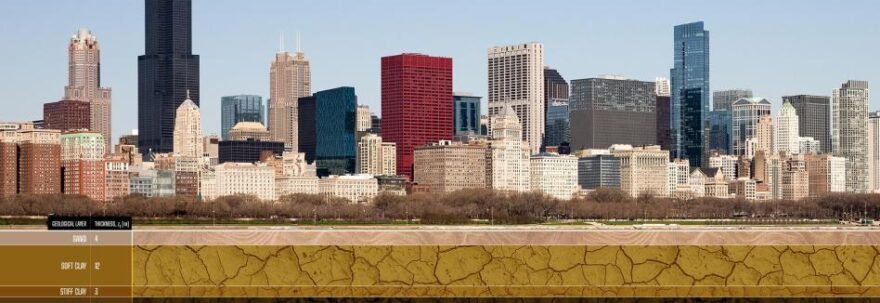Hello friends, today I want to share an article with you that I came across the other day and found intriguing. It discusses a topic that I had little knowledge about: the heating of the subsoil. I hope you find it interesting.
Increasing temperatures can lead to soil deformation, and cities are ill-prepared. This study from Northwestern University quantifies soil deformations caused by underground heat islands and their impact on civil infrastructure.
When we talk about climate change, we often mention polar ice caps, droughts, or global temperature rise. However, while these are the most recognizable issues, global warming has consequences at all levels, including the very ground we walk on. Certain materials expand when heated, while others contract, and cities are built on top of these competing forces. For the first time, researchers have quantified the increase in underground temperatures over the past 70 years and predicted what will happen in the next 30, using the city of Chicago as a testing ground.
Expansion and Contraction
If we have a mercury or alcohol thermometer at home, we can observe thermal expansion clearly. When we place the thermometer in contact with our body, we can see the liquid rising until it reaches our body temperature. Knowing the expansion rate of the liquid allows us to utilize this physical property to create a scale and take measurements. However, the fact that materials contract and expand with heat affects us in many ways, especially when constructing large infrastructures.
The classic example of thermal expansion and contraction is seen in railroad tracks. A small gap is always left between segments of the tracks so that when it gets hot and the metal expands, they won’t press against each other, which would result in track deformation. But this principle is not limited to railroad tracks. Many buildings today incorporate expansion joints that follow the same principle. However, there is a variable that affects all these constructions, and its effects may be underestimated: the movement of the ground itself.
Up and Down
According to the lead author of the study, Alessandro Rotta, underground climate change is a silent danger. The main problem is the deformation of the soil due to temperature variations, as many infrastructures may not be prepared to withstand these slight movements. Rotta also states that this phenomenon may not be directly dangerous for people but can affect the foundations of buildings and other systems buried in the ground, such as subway tunnels and sewers.
The phenomenon of “underground heat island” is caused by cities constantly radiating heat through their structures. However, while this phenomenon has been known for quite some time, its consequences have only recently been investigated. Researchers fear that the increase in underground temperatures could range from 0.1 to 2.5 degrees Celsius per decade. This represents a significant increase in some cases and poses not only heat-related dangers but also potential ecological issues such as water pollution.
Chicago as a Testing Ground
The study conducted by Northwestern University took place in Chicago, the American city known for its skyscrapers. They installed a network of 150 sensors that sent real-time temperature measurements to a central computer. To capture different situations, the sensors were strategically placed in various locations throughout the city, including parks, building basements, subway tunnels, underground parking lots, and the subsurface of certain streets. Data was collected for 3 years to create a model that would help simulate past and future conditions.
According to this model, since Chicago built its tunnel network in the 1950s, the subsurface temperature has been affected, leading to greater variations in soil contraction and expansion. These variations can range from 8 to 12 millimeters, imperceptible to humans but exerting enormous stress on underground structures.
This phenomenon is global, but fortunately, modern construction materials are much more resilient than those used centuries ago. However, many cities in Spain and Europe have old buildings that could be seriously affected by these disturbances. Therefore, to preempt future disasters, it would be interesting to measure temperature variations in the subsurface of cities with historically or artistically significant buildings.



